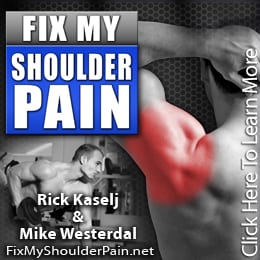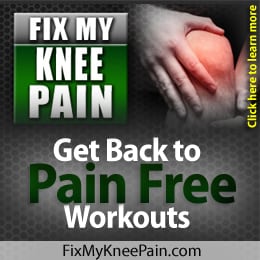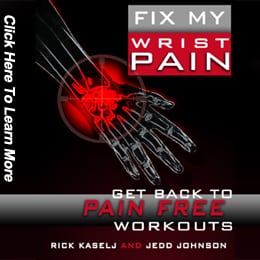Strength is a Skill
In October 2010, one of the most significant events in my career as a fitness professional occurred…I met Dan John.
Although I didn’t know it at the time, sitting in an overheated open-air dome at Disney World’s Wide World of Sports, I had no idea the impact that this man – whose presence rivaled that of King Kong, but whose humor reminded me of Chris Farley – would have on my view of how I would write training programs and train clients from that day forward.
Like a lot of fitness people, I had heard of Dan before.
I’d read his material on fitness websites and listened to interviews as his simple approach to training and life – with humor always mixed in – resonated with me like no other.
But it wasn’t until that weekend at my Level 1 RKC Kettlebell Certification at Disney World of all places (where I was without my wife and 5 kids who were at home in the autumn cold of Toronto – the guilt still eats away at me), that I learned one of the most valuable lessons that will forever stick with me like the feeling when I completed my RKC snatch test for the first time
Strength is your container.
Profound, isn’t it.
That’s what Coach Dan said. “Strength is your container.”
Why is that significant?
Because it says everything about how you should train and develop as a human who is interested in improving themselves both physically and mentally.
Strength is the container from which all other physical qualities or training goals can be added.
If your goal is hypertrophy – the stronger you are the more weight you’ll be able to lift, the bigger you’ll get.
If your goal is power – the stronger you are, the more weight you’ll be able to lift at a faster pace, the more explosive you’ll get.
If your goal is fat loss – the stronger you are, the more weight you’ll be able to lift for a longer, more metabolically demanding duration, the leaner you’ll get.
Even cardiovascularly (of all things), the stronger you are, the better you will be at any endurance event.
In a 2008 study conducted by Oyvind Storen, et al, in Norway, 2 groups of runners were tested.
Group 1 (the control group) performed their standard endurance training runs 4 days per week.
Group 2 performed their standard 4 days of training runs in addition to 3 days per week of barbell squat focused training.
At the end of 8 weeks, the strength training group not only became stronger, but also more powerful – they were able to generate force much more quickly – and displayed a 5% increase in running economy and a 21% improvement (!) in a tested treadmill run to exhaustion.
The non-strength training group displayed no increase on either mark.
The goal of any and every trainee that ever crosses my path from that point forward has always been (and will always be) to increase the size of their “container.”
The bigger the container (the stronger you become) the better you’ll be at any physical endeavor.
With all movement patterns and (lack of) muscle imbalances being equal, the individual with a container the size of a swimming pool will always be able to physically perform better than the one with the shot glass.
Strength will always be your limitation to performance or your best ally to get you through.
So how do we get stronger?
It goes a little bit deeper than just being able to add weight to the bar and lifting heavier.
Strength is a skill.
Just like how a golfer wouldn’t go out to the range once per week for 4 hours and swing his golf club 9845 times in one session until his arm fell off, you can’t get stronger or expect optimal results from your training if you workout once per week and go until you throw up.
Instead, you work at mastery of the skill – be it golf or lifting weights – through practice. This means pushing yourself at times (maybe once per week), but mostly focusing on “owning the technique” and understanding that even though you’re trying to press a weight overhead, it is in fact your entire body that is moving the weight and not just your shoulders and pecs.
The more force you’re able to generate from ALL of your muscles – from your feet right up through your back – the easier it will be to move your weight.
This – recruiting muscles other than the “prime movers” to move a weight – is a skill and one that can be mastered just like swinging a golf club or shooting a free throw.
So as the RKC has evolved into The StrongFirst School of Strength (for which Dan John is now a master instructor), we use the kettlebell as our tool of choice to improve our skill of strength.
It goes beyond a meathead approach to training and moves internally as our goal is now to “own our kettlebell” before we go out and buy a new one.
The funny thing is, amazing things start to happen to our bodies when we focus on strength and skill acquisition when we use a kettlebell.
Take a look at any Hardstyle Kettlebell practitioner and you should notice that not only are they pound-for-pound strong, but they are lean, athletically muscular and most importantly, they move well.
Kettlebell exercises involve movements that use the entire body and because of the way the kettlebell is shaped, you naturally get pulled into alignment.
For our School of Strength, the kettlebell is our tool of choice because of it’s versatility and simplicity.
As the mantra in the SFG goes, “You can be anything you like, but you must be StrongFirst.”
==============================================
Chris Lopez is a Strength Coach and StrongFirst Girya Level 2 Instructor (SFGII). He is the Author of the TT Kettlebell Evolution Advanced Fat Loss Program and Editor of www.KettlebellWorkouts.com. Chris lives in Toronto, Ontario, Canada with his wife and their 5 children.




